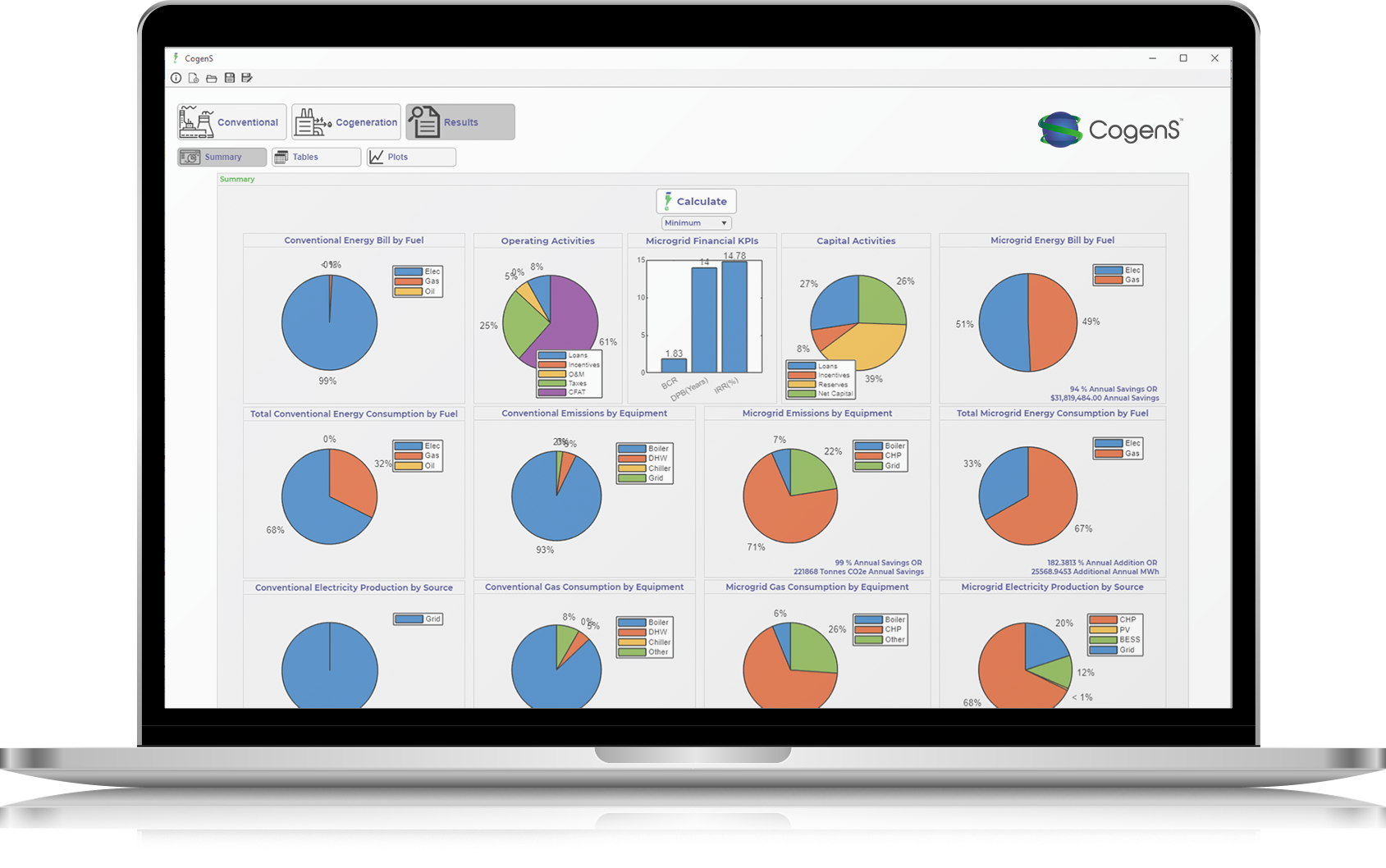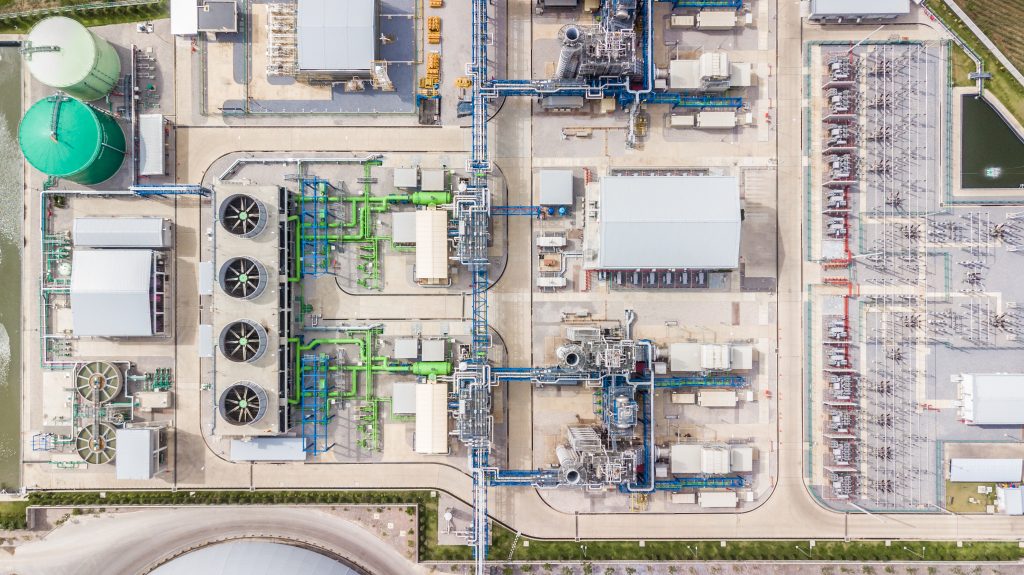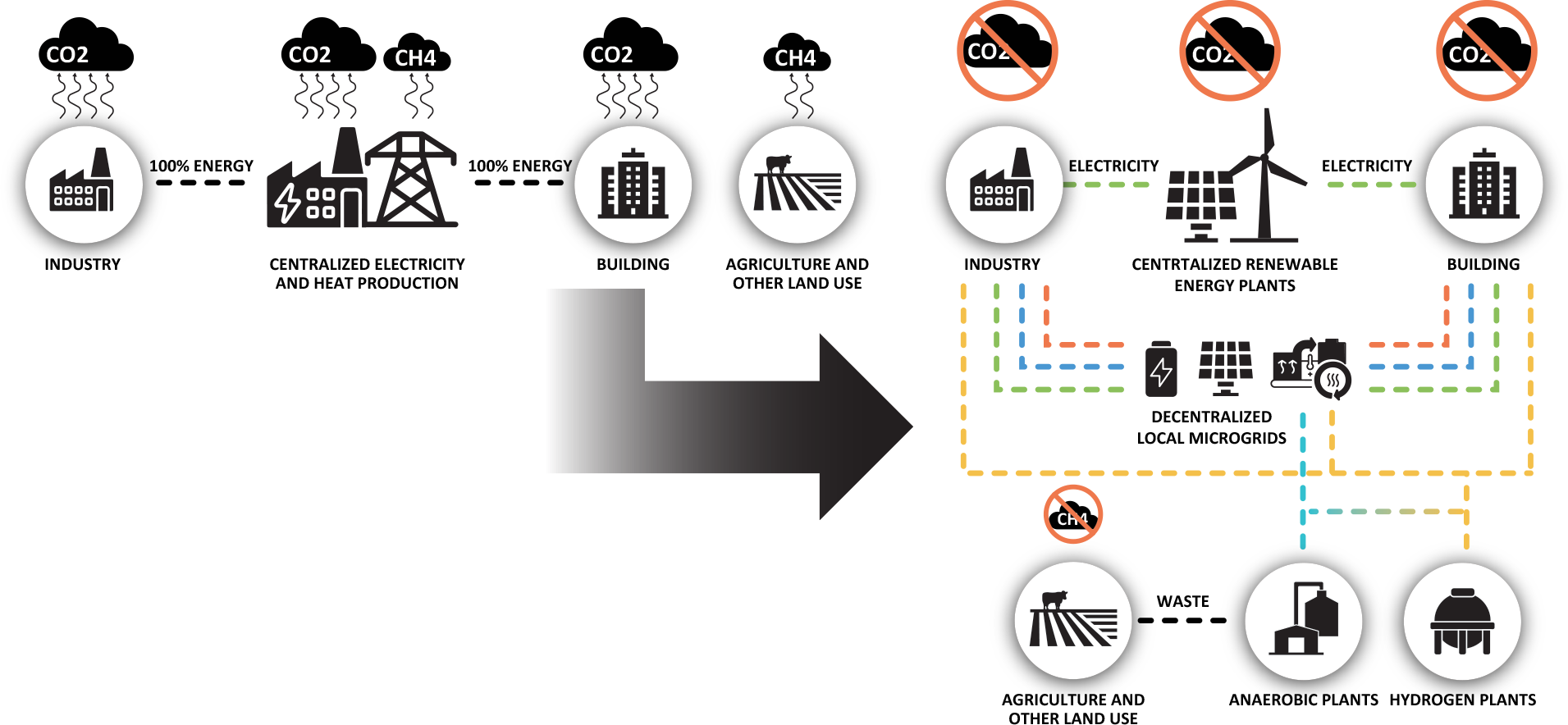CogenS™ Project Design Process
- Project Info
- Energy Profiles
- Cooling
- Heating
- Energy Cost
- Microgrid Sizing
- Energy Resources
- Energy Storage
- Finance
- Results

Project Info
-
Location.
-
Building Type (Industrial, Commercial or Residential).
-
Microgrid components (Combined Heat and Power, Combined Cooling Heat and Power, Energy Storage and PV).
-
Modeling interval (15, 20, 30 and 60 minutes).
-
Metric VS Imperial Units.
-
Weather Data.

Energy Profiles
-
Building energy profiles Estimation and Analysis (Electric, Gas, Oil, Cooling, Heating, Domestic Hot Water).
-
Fuel specifications (Heating Value and Density).
-
Scenario Analysis Option (Maximum, Average and Minimum Load Profiles)
-
Peak, Minimum, Average Demand and Load Factor.
-
Grid Emissions Factor.

Cooling
Chillers
-
Equipment modeling features:
-
Screw, Centrifugal, Scroll and Reciprocating compressors.
-
Water- or air-cooled condenser.
-
Electric or Gas-Fired absorption.
-
Indirect Hot Water or Steam absorption.
-
System modelling features:
-
Identical multi-unit system.
-
Variable or Constant Flow.
-
Supply Temperature Reset.
-
Part-Load Efficiency Performance.
-
Optimized number of operating units.
-
CO2e emissions.
Cooling Towers
-
Equipment modeling features:
-
Open or closed loop.
-
Cross or Counter flow.
-
Single, 2-speed or variable speed fan.
-
System modelling features:
-
Identical multi-unit system.
-
Free Cooling Heat Exchanger option.
-
Wet-Bulb Reset Control Scheme.
-
Variable or Constant Flow.
-
Supply Temperature Reset.
-
CoolTools or YorkCalc Heat Rejection Performance.
-
Optimized number of operating units.

Heating
Boilers
-
Equipment modeling features:
-
Condensing or Non-Condensing.
-
Hot Water or Steam.
-
Electric, Gas or Oil.
-
Mechanical or Natural draft.
-
System modelling features:
-
Identical multi-unit.
-
Variable or Constant Flow.
-
Supply Temperature Reset.
-
Part-Load Efficiency Performance.
-
Optimized number of operating units.
-
CO2e emissions.
Hot Water Heaters
-
Equipment modeling features:
-
Storage or Tankless.
-
Cycle or modulating control.
-
Heat Exchanger, Electric, Gas or Oil.
-
System modelling features:
-
Identical multi-unit.
-
Variable or Constant Flow.
-
Part-Load Efficiency Performance.
-
Optimized number of operating units.
-
CO2e emissions.

Energy Cost
Electric and Gas Utility Tariff
-
Fixed and minimum charges.
-
Rates Escalation.
-
Unlimited Energy and Demand charges by Period and Tier.
-
5 Different Metering and Billing Types:
-
Net Energy Metering
-
Net Energy Metering with $ Credits
-
Net Billing
-
Net Billing with Carry Over to next Month
-
Buy All/Sell All
Oil Cost
-
Fixed and minimum charges.
-
Rates Escalation.

Microgrid sizing
-
Optimum CHP Electric and Thermal Outputs.
-
Battery and Thermal Energy Storage Sizes.
-
Auxiliary boiler system size.
-
CHP Microgrid System Load Duration Curve Representation.

Energy Resources
Combined Heat and Power
-
Equipment modeling features:
-
Fuel Cell, Reciprocating Internal Combustion Engine and Microturbine.
-
Hot Water or Steam.
-
Natural Gas, Renewable Natural Gas, Hydrogen or Liquified Petroleum Gas.
-
System modeling feattures:
-
Identical multi-unit system.
-
Variable or Constant Flow.
-
Supply Temperature Reset.
-
Shut down and replacement simulation.
-
Output Control.
-
Cost-based Dispatch Optimization with Energy Storage and Grid.
-
Unit Sequencing simulation based on runtime.
-
Dynamic Response.
-
Annual, Temperature and Restart Degradation.
-
Part-Load Efficiency Performance.
-
Optimized number of operating units.
-
Capital and O&M costs.
-
CO2e emissions.
Solar Photo-Voltaic system PVWatts Version 6 API
-
System locatiion.
-
System DC nameplate capacity.
-
Array and Module Types.
-
Azimuth and Tilt angles.
-
Annual Degredation.
-
Capital and O&M costs.

Energy Storage
Thermal Energy Storage
-
Single Hot Water Energy Storage Tank.
-
CHP Priority.
-
Supply Temperature Reset.
-
Stratified tank approximated model.
-
Capital and O&M costs.
Battery Energy Storage System
-
Single System.
-
Idealized flat charge and discharge curve.
-
Dynamic Response.
-
Annual, Temperature and Cycle Degradation.
-
Replacement simulation.
-
Capital and O&M costs.
Hydrogen Energy Storage System
-
Multi-unit System.
-
Electrolyzer model.
-
Pressurized vessel + Compressor model.
-
Metal Hydride model.
-
Dynamic Response.
-
Annual, Temperature and Cycle Degradation.
-
Replacement simulation.
-
Capital and O&M costs.

Finance
-
Power Purchase Agreement Provider or Building Owner investment financial models.
-
Inflation, Discounting and effective tax rates.
-
Capacity and Production based incentives.
-
Assets Depreciation, Loans and Reserves.
-
Project Financial Metrics (PV, IRR, SPB, DPB, BCR, EAS, BTCF, CFAT).

Results
Summary
-
Energy, Financial and Emissions savings.
-
Financial KPIs
-
Project Capital and Operating Activities pie charts.
-
Conventional VS Cogeneration Pie charts:
-
Energy Bill and Consumption by fuel.
-
Gas Consumption by fuel.
-
Electricity production and emissions by equipment.
Tables
-
Lifetime profiles for key project variables in tabular format:
-
Sub hourly
-
Hourly
-
Daily
-
Weekly
-
Monthly
-
Yearly
Plots
-
Lifetime profiles for key project variables in plot format:
-
Sub hourly
-
Hourly
-
Daily
-
Weekly
-
Monthly
-
Yearly






